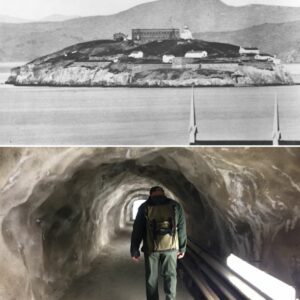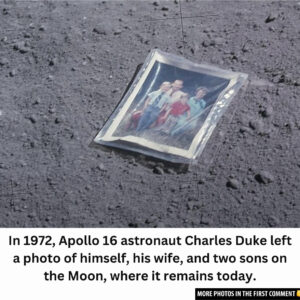Marie Curie, a name synonymous with groundbreaking discoveries in the world of science, left behind not only a legacy of pioneering research but also a set of personal artifacts that continue to astound the scientific community. One of the most fascinating items is her radiation-contaminated notebook, a testament to her relentless pursuit of knowledge, despite the risks she unknowingly exposed herself to. For over a century, this notebook has carried the eerie imprint of its creator’s dedication, still radioactive and sealed away in protective storage. As we explore this unique artifact, we uncover the profound intersection of curiosity, sacrifice, and scientific history.
Marie Curie: A Pioneer in Radioactivity
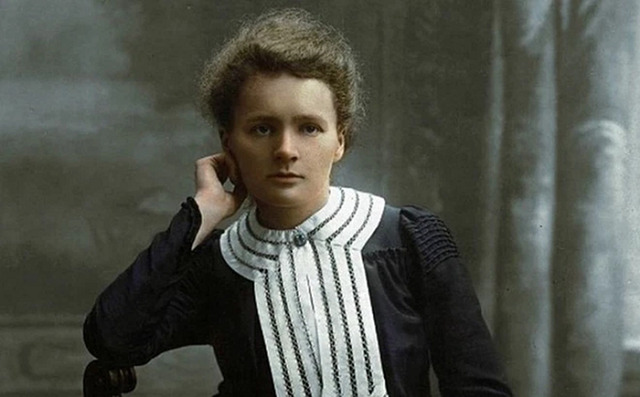
Born in Warsaw in 1867, Marie Curie’s early years were marked by a relentless desire to pursue scientific knowledge. After moving to Paris, she earned her doctorate in physics, and in 1903, she became the first woman to win a Nobel Prize in Physics, sharing the honor with her husband Pierre Curie and Henri Becquerel. Marie Curie’s work on radiation led her to further explore the properties of uranium and radium, resulting in her discovery of two new elements: radium and polonium.
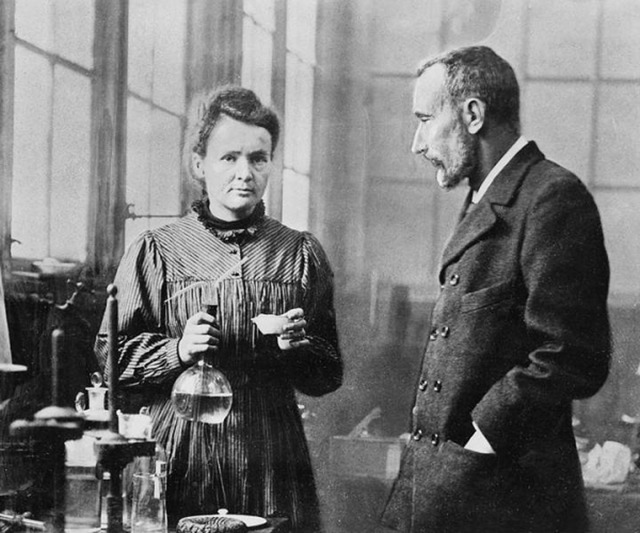
Curie’s research into the mysterious phenomenon of radioactivity, a term she coined herself, would go on to form the foundation for future advancements in physics, chemistry, and medicine. Her dedication to scientific research, however, was not without consequences. At the time, the dangers of radiation were not understood, and Curie frequently worked with radium and polonium without any protective measures. Tragically, it was this exposure that ultimately led to her untimely death from aplastic anemia in 1934, a condition caused by prolonged radiation exposure.
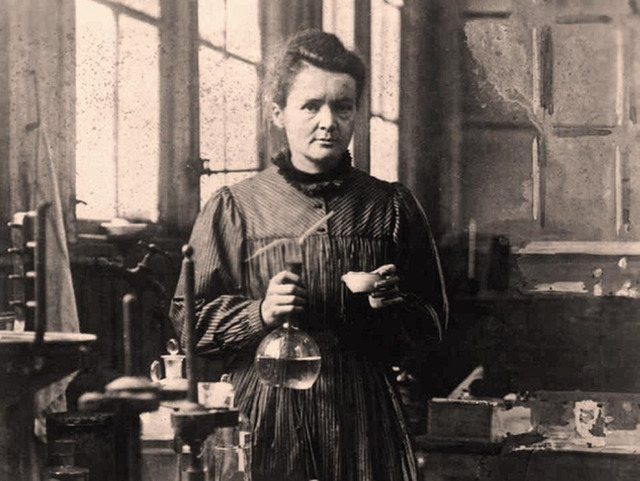
Video
Watch the video Marie Curie’s Radioactive Notebooks to delve into the groundbreaking legacy of her work and its lasting impact on science.
The Discovery and Controversy Surrounding Curie’s Radium-226
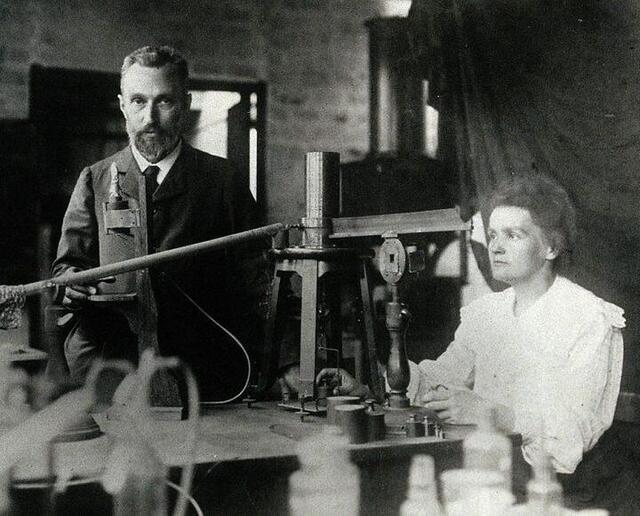
Curie’s experiments, although groundbreaking, came at a heavy personal cost. She unknowingly exposed herself to high levels of radiation, leading to severe health problems. One of her most significant contributions was her work with radium-226, a highly radioactive element that became central to her research. Radium-226’s half-life is an astounding 1,600 years, meaning it retains its radioactive properties for millennia.
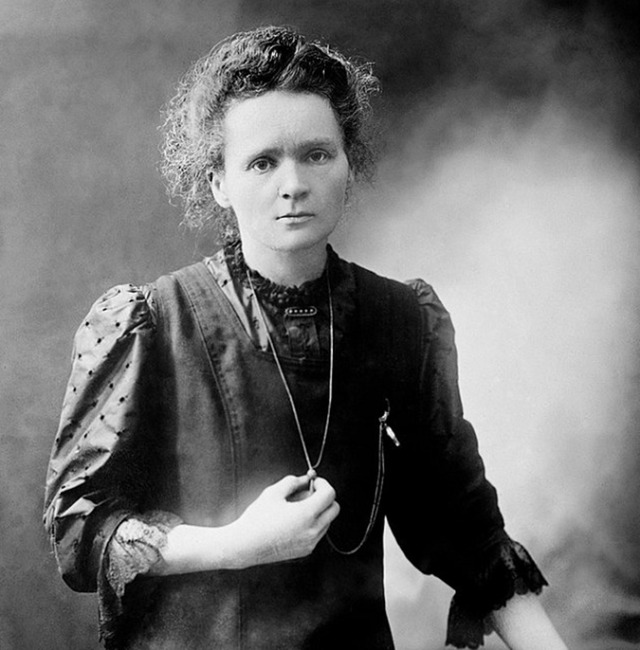
This discovery, though monumental for the scientific community, came with unforeseen consequences. Radium-226, while useful in treating certain medical conditions, also posed extreme risks to those working with it, as it could cause severe radiation poisoning. The very properties that made radium a powerful tool in medicine also made it one of the most dangerous substances known to man at the time. Unfortunately, Curie was not aware of these dangers and continued to work with the substance, leading to her premature death.
The Hazardous Legacy: The Infamous Notebook

Among the items most closely associated with Marie Curie’s legacy is her personal notebook, which she kept during her research. This notebook contains not just her thoughts and experiments but also the record of her discoveries and ideas that changed the world. However, what makes this notebook so fascinating – and dangerous – is the fact that it remains radioactive to this day.
The notebook was used by Curie as she carried out her groundbreaking experiments, handling radium-226 without any protective measures. As a result, the notebook became heavily contaminated with radiation. Even more startling, the radiation levels are still significant, and the notebook remains hazardous. Researchers have noted that the notebook still contains radium-226, which continues to emit radiation. According to current estimates, it will take another 1,600 years for the radiation levels to reduce by half.

The Dangers of Radium and Its Long-lasting Effects
Radium-226 is one of the most dangerous elements known to science. Its radioactive decay releases alpha, beta, and gamma radiation, which can cause severe health effects, including cancer, genetic mutations, and death. The fact that Marie Curie’s notebook still harbors radium-226 more than 100 years after her death speaks volumes about the long-lasting effects of radiation exposure.

One of the most alarming aspects of this legacy is the continued danger posed by objects contaminated with radium-226. Despite being stored safely in a lead-lined box at the French National Library, the notebook is still a threat. Anyone attempting to handle it without proper protective gear would be exposed to significant radiation. This has led to strict protocols surrounding its handling, with researchers and visitors required to wear protective clothing and sign waivers before they can view the notebook.
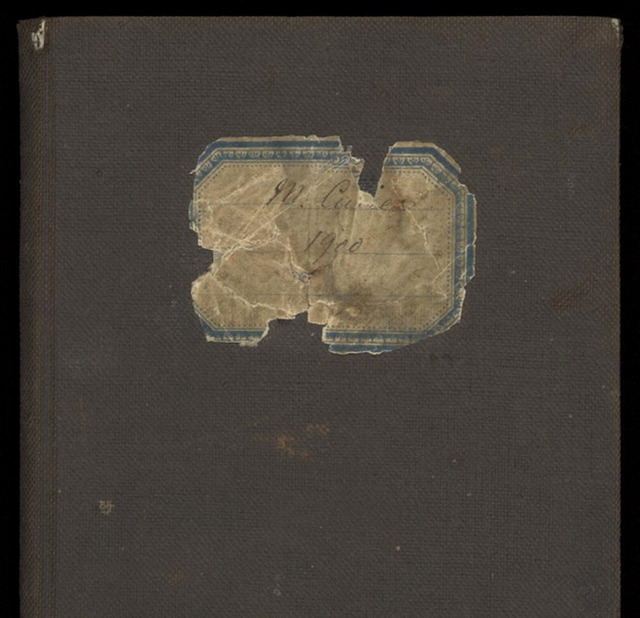
The persistent radiation in Curie’s notebook serves as a stark reminder of the dangers of working with radioactive materials. While her discoveries laid the groundwork for advancements in cancer treatment and nuclear energy, they also highlighted the risks of exposure to such materials, especially when safety protocols were not yet established.
Preserving the Legacy: The Protection and Preservation of Curie’s Work

The legacy of Marie Curie is celebrated around the world, and her contributions to science are widely regarded as some of the most significant in history. However, her personal belongings, including her notebook, are reminders of the dangers she faced in her quest for knowledge. Today, these items are carefully preserved, not only because of their historical value but also because they are radioactive.
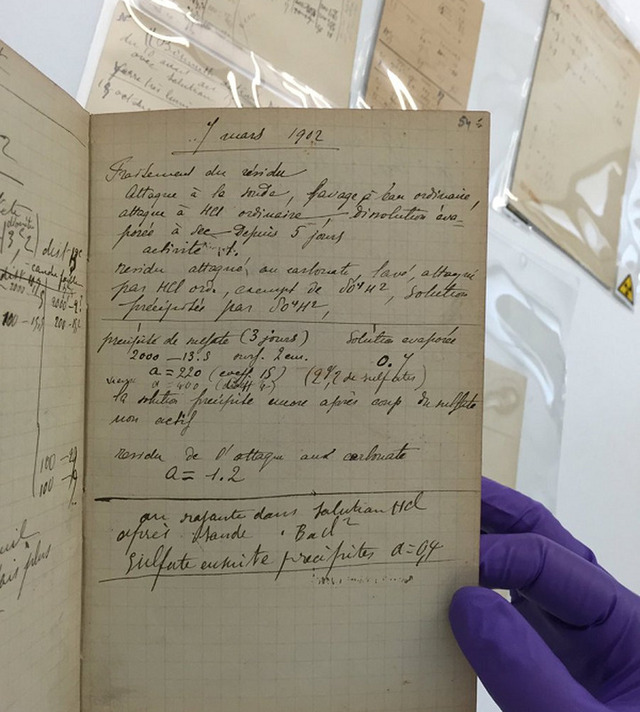
At the French National Library, Curie’s notebook is stored in a specially designed lead box to contain its radiation. Only a few researchers are allowed to view the contents of the notebook, and they must adhere to strict safety measures to avoid exposure. The notebook has become a symbol of the price Curie paid for her scientific curiosity, as well as the incredible resilience of her work.
In addition to her notebook, many of Curie’s other personal belongings, such as her laboratory equipment, books, and even her clothing, remain radioactive. These items serve as a physical testament to the dangers of early radiation research and the scientific breakthroughs that came at a great cost.
The Digitization of Marie Curie’s Notebook
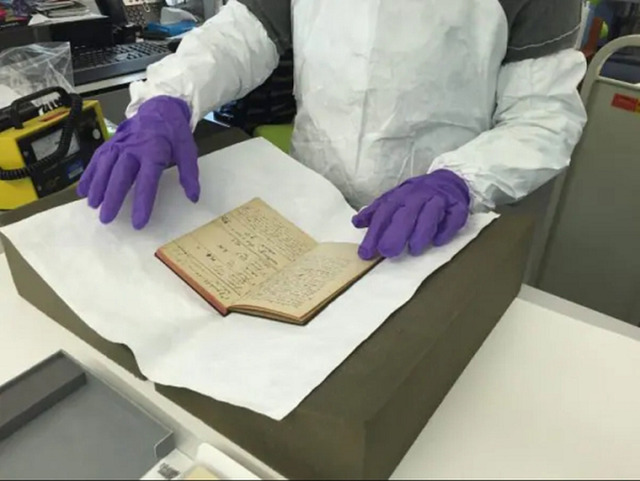
In an effort to preserve and share Curie’s work with the world, the French National Library has digitized her notebooks, making them accessible to researchers and the public. Now, anyone can explore the pages of Curie’s scientific records without the risk of exposure to radiation. The digital collection provides a fascinating look into the early days of radioactivity research and allows us to appreciate the depth of Curie’s contributions to science.
The digitization of Curie’s notebooks also ensures that her work will be preserved for future generations. As the physical items are kept in secure storage, the digital records offer an alternative means of studying her research without the risks associated with handling radioactive materials.
A Fascinating Glimpse into the Past: What the Notebook Reveals About Early Radioactivity Research
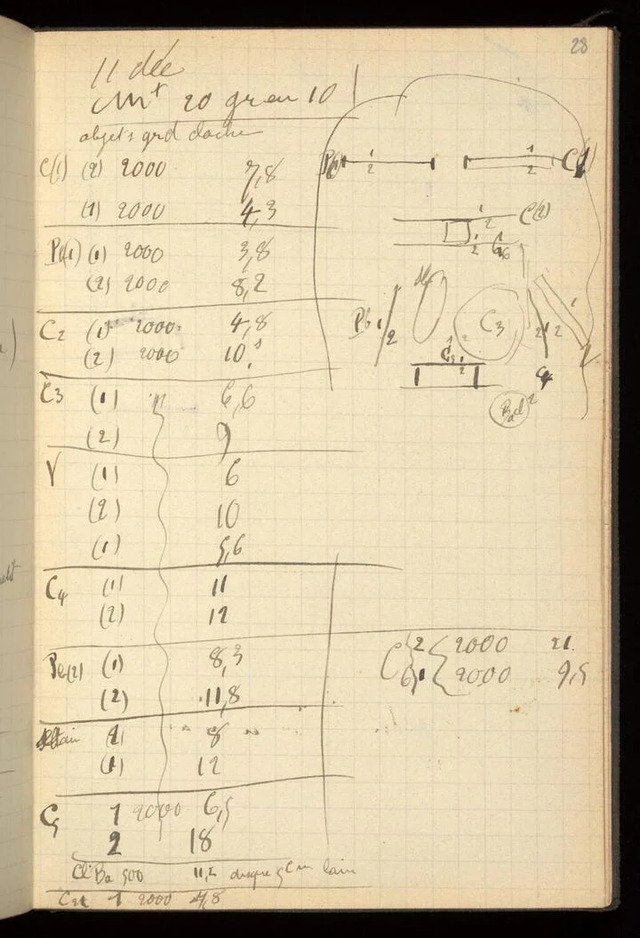
Marie Curie’s notebook is more than just a collection of notes; it is a window into the early days of radioactivity research. Through her detailed experiments and observations, Curie was able to uncover the mysteries of radiation and pave the way for future discoveries. Her work laid the foundation for modern physics and chemistry, and her notebook serves as a powerful reminder of the dedication and sacrifice required to make such breakthroughs.
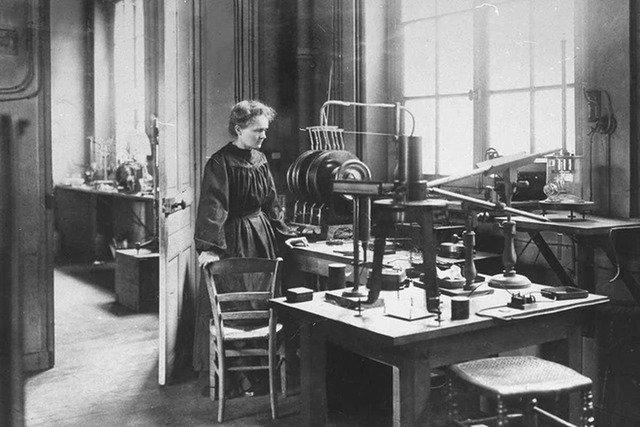
The notebook contains invaluable insights into Curie’s thought process, her experimental methods, and her scientific discoveries. As we look back on her work, we can gain a deeper understanding of the challenges she faced and the remarkable accomplishments she achieved in the face of adversity.
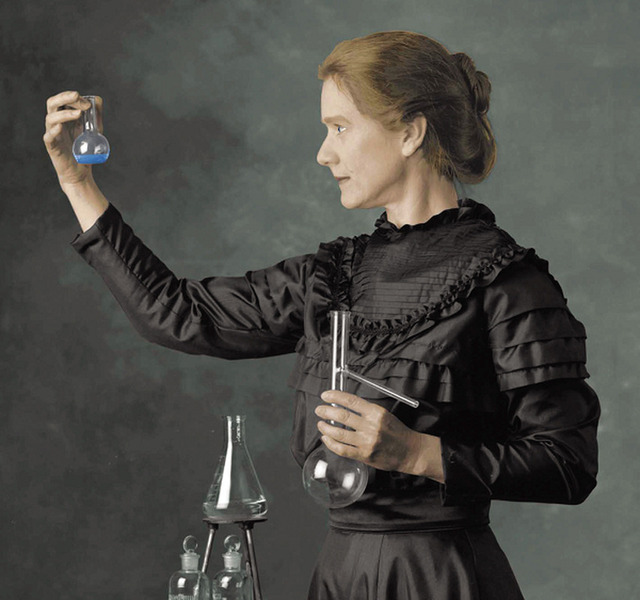
Video
Watch the video How Marie Curie’s Genius Led to Her Untimely Death to explore the tragic consequence of her groundbreaking discoveries.
Conclusion: The Enduring Impact of Marie Curie’s Work
Marie Curie’s legacy continues to inspire scientists and researchers around the world. Her work on radioactivity not only advanced our understanding of the natural world but also changed the course of history. While the dangers she faced in her research are evident, her contributions to science remain timeless.
The radioactive notebook that she left behind is both a testament to her brilliance and a cautionary reminder of the price of scientific discovery. As we continue to study and appreciate Curie’s work, we honor her memory and the indomitable spirit that drove her to push the boundaries of human knowledge.
In the years to come, the story of Marie Curie and her notebook will continue to captivate the imaginations of future generations, reminding us of the sacrifices made in the name of progress and the lasting impact of scientific discovery.

